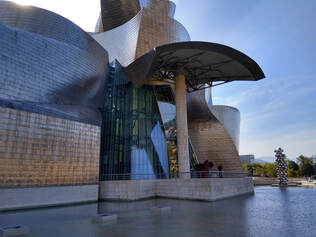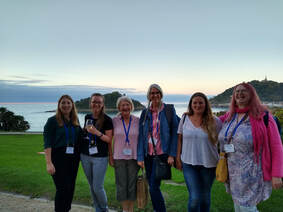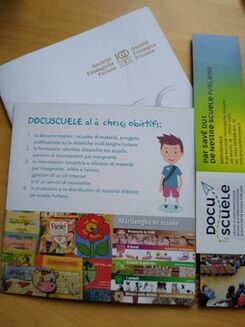After almost three years of staying relatively close to home (as a result of the pandemic, plus a generally cautious attitude), I decided that 2022 was the year to spread my wings and embark on some foreign travel once more. My previous trip abroad had been in September 2019, when I attended the annual gathering of the Mediterranean Editors and Translators (MET) – the so-called MET Meeting (METM, pronounced ‘met-um’) – in Split, Croatia. Ever since I heard the plans for a meeting in San Sebastián, I’d been thinking about attending. It sounded such a wonderful location.
I decided to combine METM with my main holiday, as I had done in Split. But in a break with tradition, I chose to travel there entirely by rail, with stopovers in Paris on both the outward and return journeys, rather than by air, as I would normally have done. I’d visited Spain before, but never the Basque country, so I was keen to experience the delights of San Sebastián.
On my first full day in the city I took a bus to another centre of Basque culture, Bilbao. The main attraction there was the Guggenheim Museum, a fascinating structure designed by Frank Gehry and containing some interesting exhibitions. It was well worth the visit, and I enjoyed exploring other parts of Bilbao too.


Friday
The following day it was time for METM. My first activity was an ‘Off-METM’ lunch hosted by Jenny Zonneveld. These lunches are small groups focused loosely on a theme (ours was ‘Make the most of your network’, a vital topic for freelancers), aimed at helping delegates to get to know a few others before the conference itself. There were also various optional workshops that delegates could pre-book.
To give you a flavour of the conference itself, I’ve summarised the various sessions and presentations that I attended. Because MET is an organisation for both editors and translators, the programme featured some sessions that were relevant to one or other of these different professions, and some that were relevant to everyone.
Mentoring: human support in a digital world
Translator Louise Normandière, who mentors other translators, described the different elements of a mentoring arrangement. All such arrangements are unique and can take different forms, some more formal than others. What they all have in common is that they involve a mentor who is more experienced supporting someone with less experience (and crucially, not necessarily an older person mentoring a younger one). Louise described the qualities of a good mentor: approachability, objectivity, diplomacy and honesty, among others. The mentor must also be willing to listen and learn, because the mentee could well have knowledge to pass on. She also described some of the pitfalls of mentoring and suggested ways in which these could be avoided, as well as characteristics of a successful mentoring relationship.
All in all, this was a very useful session on the practicalities of mentoring, encouraging those interested in becoming either a mentor or mentee to take the plunge.
Please translate this into five African languages!
Timothy Barton, a translator based in Namibia, gave a fascinating insight into minority/minoritised languages and the difficulties of finding suitable translators for them. He described the process he had followed to find translators for different languages when bidding for a UNDP project. Forced to look outside established translation circles, Timothy had found suitable individuals who were employed as journalists and university lecturers, for example. For one language – Kwedam – he had managed to recruit people who were working on a translation of the Bible into that language.
Another project, which involved providing subtitles for alcohol-awareness videos, highlighted the issues involved in checking the length of each line of speech in all languages to make sure there weren’t any huge discrepancies.
Timothy feels that with his training in translation and his project management skills, he is able to give clients a better all-round service than some agencies can. The projects he mentioned certainly tested his resourcefulness!
KEYNOTE: A look inside the multilingual mind
Cognitive scientist Jon Andoni Duñabeitia – whose work focuses on multilingualism and reading – gave a fascinating account of various aspects of the multilingual/bilingual brain. He used the metaphor of ‘The Good, The Bad and The Ugly’ to characterise how such a brain operates:
- The Good – it can automatically translate between languages
- The Bad – more languages mean more ways to say the same thing, so the brain has to decide between competing options
- The Ugly (i.e. complicated!) – this decision-making is different depending on whether the brain is operating in its ‘native’ or ‘foreign’ language
Jon’s presentation was a fascinating journey into the complexities (and marvels) of the multilingual/bilingual brain. This included the question of vocabulary size and the time taken to choose the appropriate word (compared with the monolingual brain), the issue of having to ‘block’ one’s native language when speaking another language, and how emotions can be experienced differently depending on whether they arise in the context of the ‘native’ or ‘foreign’ language.
Far from simply summarising research in this field, Jon gave insights into the impact of these issues in a wider context. The fact that decisions made in a foreign language can be different to those made in the native language has obvious implications for high-level decision making, for example at European Commission level. In marketing, research has shown that individuals are more likely to accept an unpleasant product (such as insect cookies) if it is described in their ‘foreign’ language. And public health messages – such as calls for people to be vaccinated – can have different effects in terms of acceptance depending on whether they are presented in the ‘native’ or ‘foreign’ language, with evidence to suggest that the foreign language can increase trust and reduce vaccine hesitancy.
Even to someone like me who has an essentially monolingual brain, this was all really interesting, and I’m sure the overwhelmingly bilingual/multilingual audience could relate many of Jon’s examples to their own experiences.
Welcome reception
Friday drew to a close with delegates gathering at Palacio Miramar, an imposing 19th-century house set in its own gardens on a promontory overlooking the city’s La Concha Bay. We gathered outside for drinks and nibbles, entertained by Ugarte Anaiak (the Ugarte Brothers) who demonstrated the ‘Txalaparta’, a Basque percussion instrument that developed from the tradition of crushing apples to make cider.
Realising that a fair few of us hail from Yorkshire, we took the opportunity to snap a couple of group photos. They’re a lovely memory of the evening.


Saturday
Tech, fantasy and the human factor in the time of Covid
When Courtney Greenlaw took on a translation project and Elizabeth Garrison came on board as editor/reviser, they probably had little idea of how their relationship with each other, and with the author, would develop. Courtney had an initial meeting with the author of the fantasy trilogy, but no further face-to-face discussions were possible because of Covid restrictions. With a range of digital tools at their disposal, Courtney, Elizabeth and the author developed an efficient system of communication that worked for them. They used WhatsApp for ongoing discussions and queries, with in-depth Zoom sessions to explore issues further. This included clarification on characters’ appearances, place names, and descriptions of tools and weapons that don’t exist in the ‘real’ world.
This project sounded fascinating, involving as it did the translation of poetry and songs as well as narrative text. There was even a voice-over artist for the multi-media elements of the trilogy!
It was a great reminder that there’s no ‘one size fits all’ when it comes to client communication. A flexible (and often imaginative) approach enabled Courtney and Elizabeth to bring this project to fruition under very difficult circumstances.
Fathoming Friulian and the unexpected gains in my work as a translator
Translator Haley Smith first encountered Friulian – a minority language (not a dialect) spoken in parts of northeast Italy – during the year abroad she undertook as part of her undergraduate degree, and she admitted that it came as quite a shock. She now lives in the area where Friulian is spoken and has made significant efforts to get to grips with it, taking evening classes and trying to absorb it in informal contexts.
Haley described some of the features of Friulian that are closer to English than they are to Italian, for example in the addition of ‘s’ for plurals. She talked about road signs in the area, which often give place names in Italian and Friulian, as well as the local variant spelling.

Friulian is under threat, with the number of speakers having fallen over the years. However, efforts are being made to keep it alive. Friulian is protected under regional and national law, the language and culture are promoted (by La Societât Filologjiche Furlane, for example), and books and educational materials have been produced.
While Haley doesn’t translate from Friulian, she has found that a working knowledge of the language has helped in her translation business. She’s aware of certain linguistic features and vocabulary that might be problematic when texts are going to be translated to/from Friulian. Her background knowledge helps her to build relationships with clients. Translation specialisms such as tourism and wine often have a local Friulian dimension, and an awareness of the language can be a USP. And last but not least, the Friulian concept of ‘cumbinin’ (meaning ‘we’ll sort it out together’) is surely a valuable basis for any freelance business.
Spit and polish: interactive editing
Linda Jayne Turner led this session, in which participants split into small groups and chose one of a number of texts to edit together. This was probably the session that was most directly relevant to my own work and I enjoyed tackling the academic text my group selected. For a start, it was interesting to note that we differed in what we saw as points in the text that must be corrected. And when we did reach a consensus that a particular word, phrase or sentence required attention, our approaches sometimes varied. This was also the case when the different groups fed back to the room, prompting some really interesting discussions.
We could have spent much longer discussing these texts, both in our smaller groups and in the room as a whole. It was good to get stuck in and edit some real-life material, and it was particularly useful for those of us who usually work alone to have a chance to collaborate with others in this way.
2022 MET General Assembly

As well as a review of MET’s activities over the year, the General Assembly included an announcement of the venue for METM23: Mantua in northern Italy.
Delegates voted on a number of resolutions, and there was an open discussion in which members could raise questions. At the end of the meeting, the raffle was drawn, with a range of editing- and translation-related products and subscriptions up for grabs. Congratulations to the lucky winners!


Comments
2 responses to “New routes, fresh perspectives: METM22 in San Sebastián”
Thanks for the lovely review. I knew most attendees wouldn’t be applying what I was sharing, so my aim was to make it interesting.
You certainly succeeded! And even if most attendees don’t apply the approaches you were talking about, I think there’s a broader point here about the need for lateral thinking when a project isn’t straightforward.